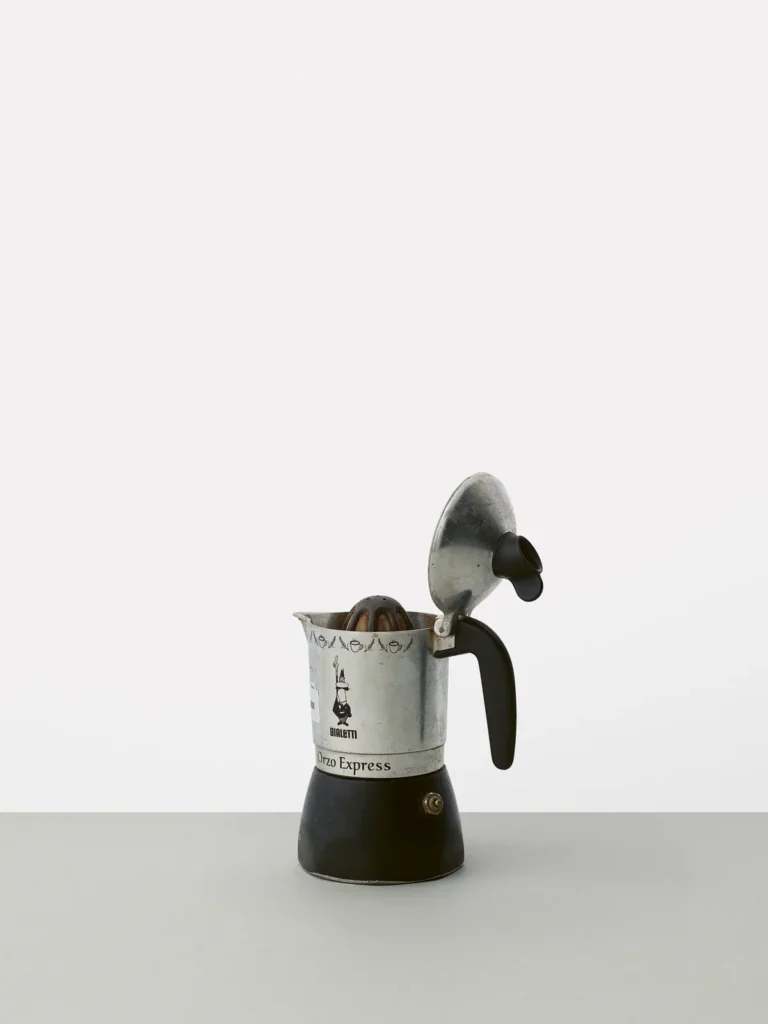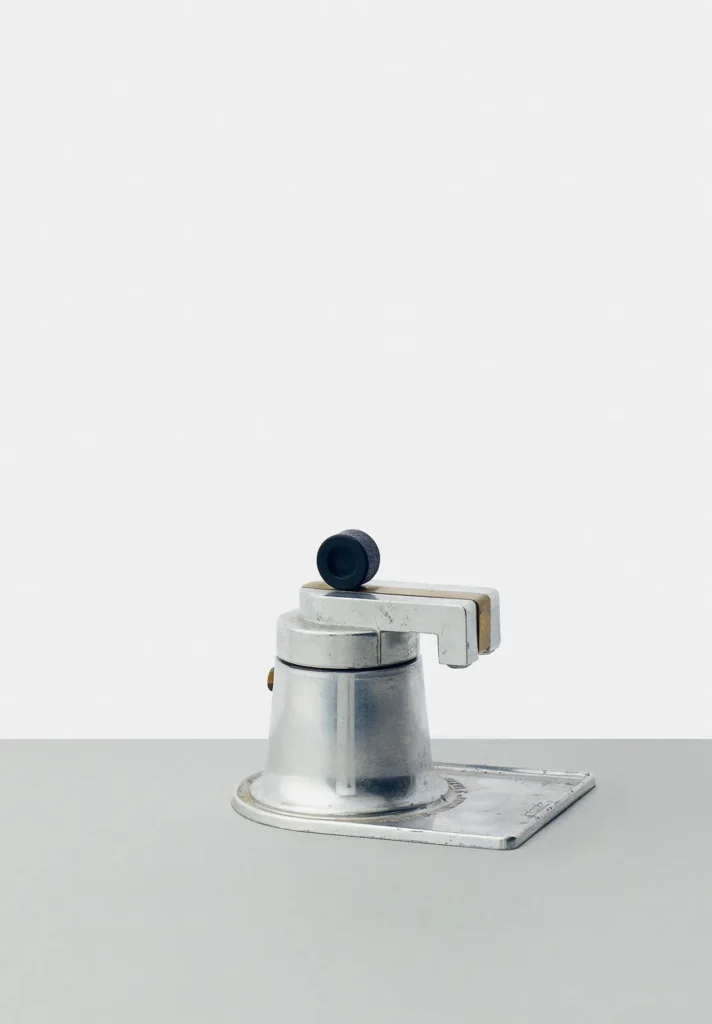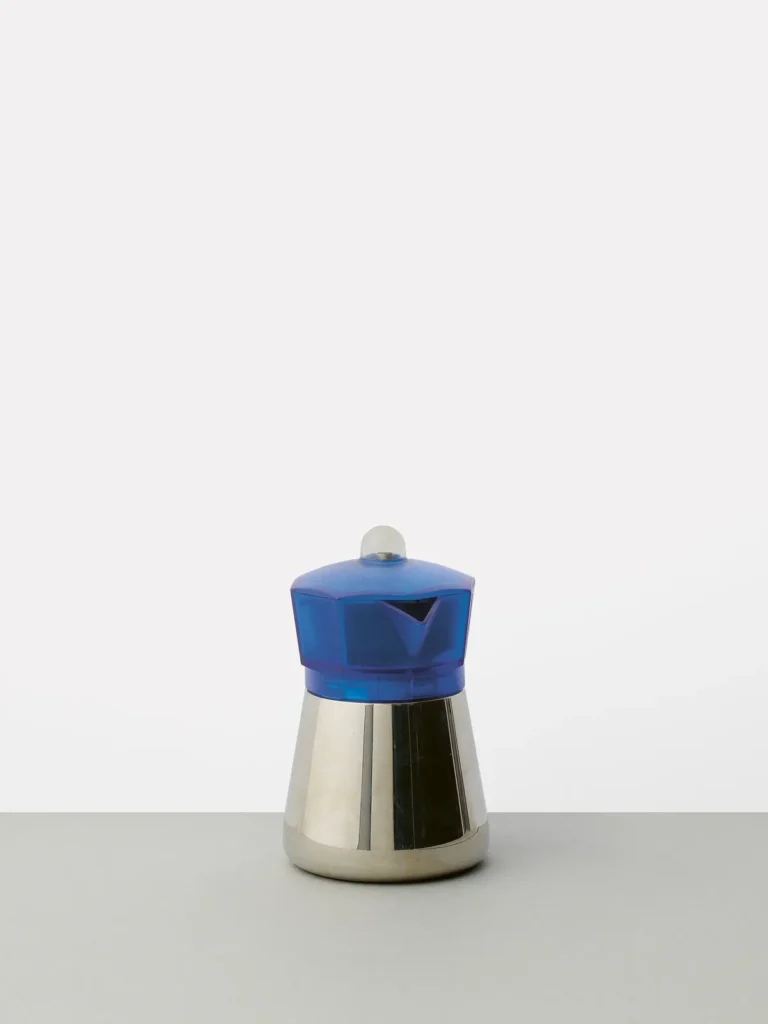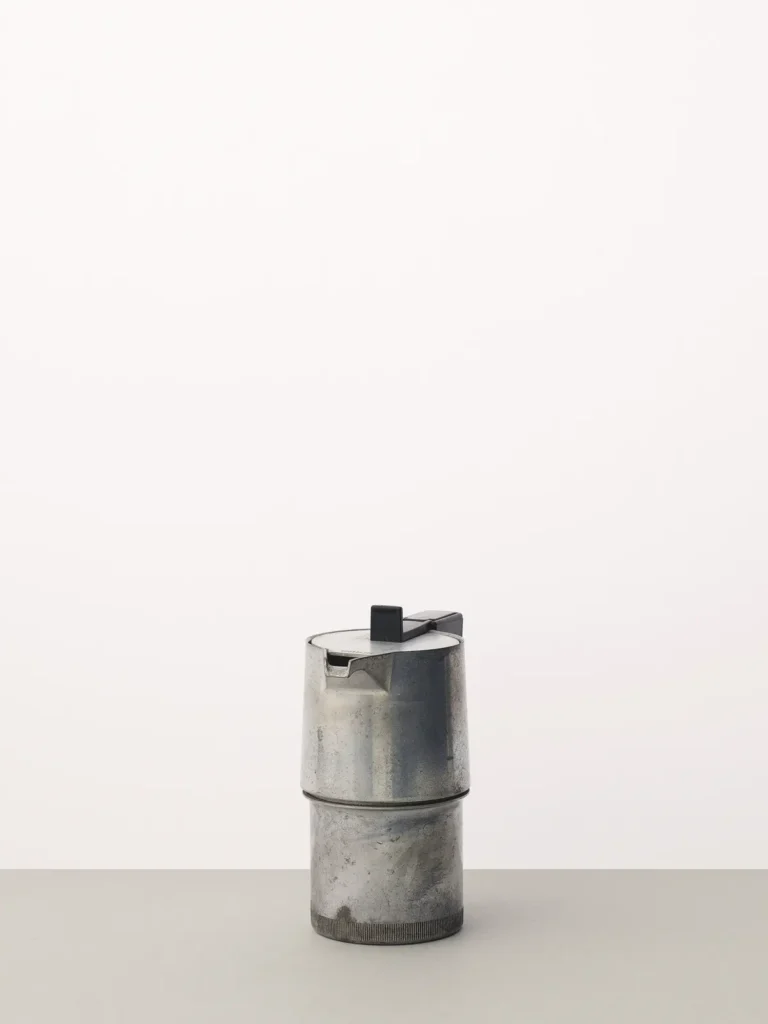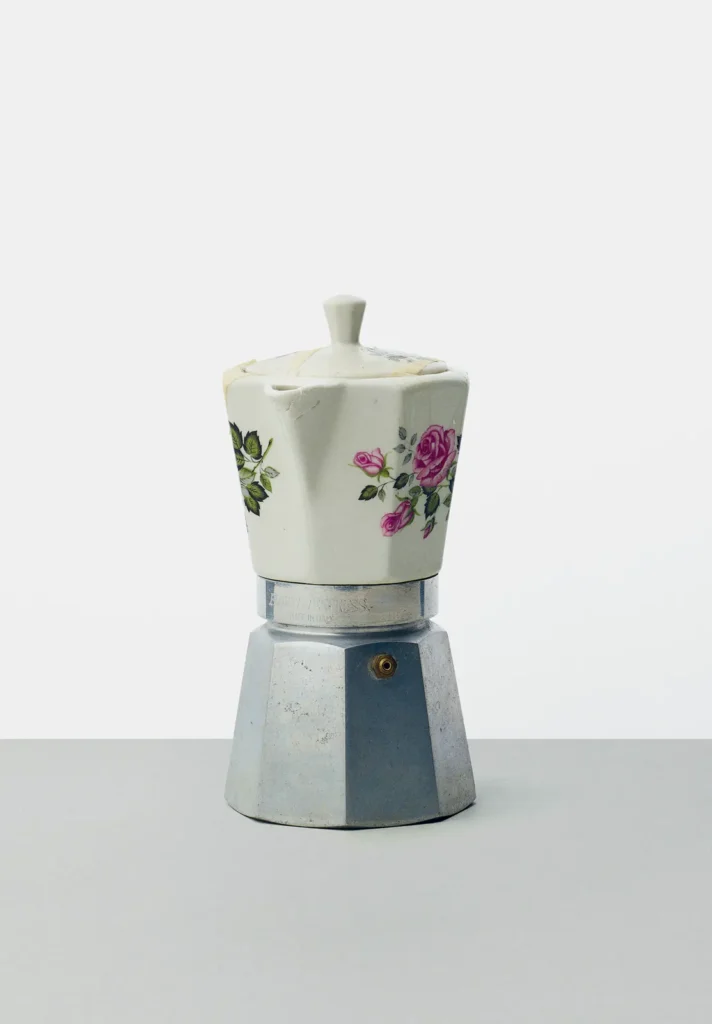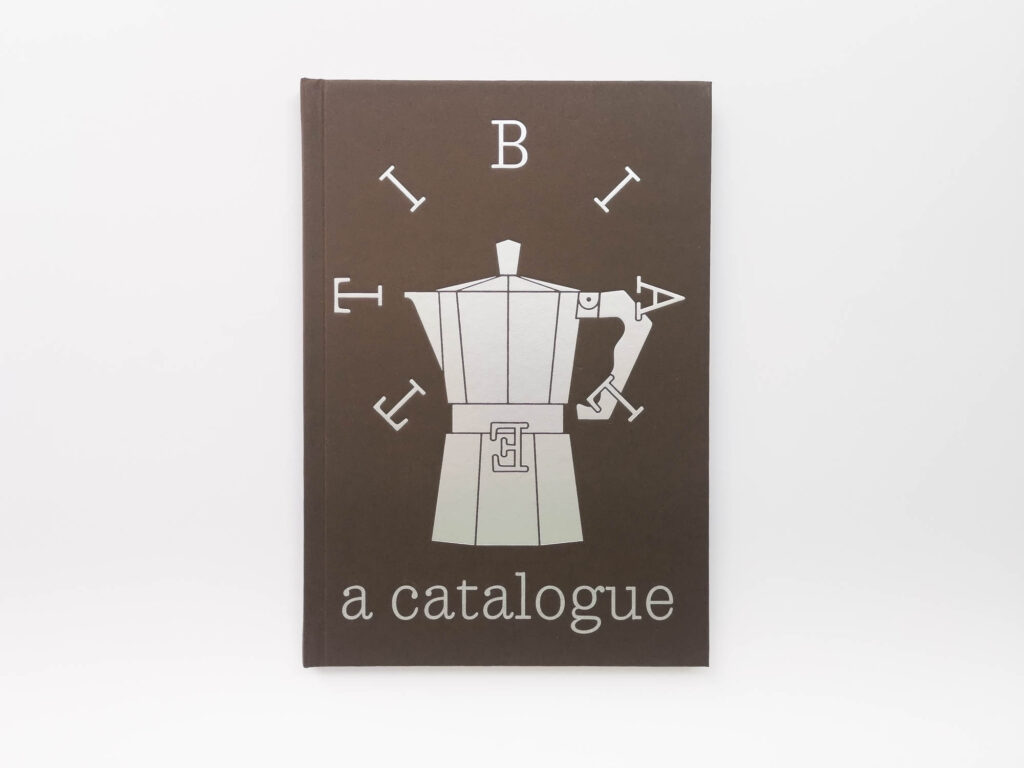
What comes to mind when you think of Italian lifestyle? I think of Fiat, Prada, Vespa, Ponti, Armani, and Bialetti. The Bialetti aluminum Moka stovetop coffee maker is one of the most recognizable and classic products in the history of modern design, a staple of Italian culture. While I am not a coffee drinker, we still own two of them and place them on the stove when we have guests over. As the aroma of the ground coffee fills our entire home, I am reminded of my grandmother’s kitchen. I recently learned that it was named after the city Mocha in Yemen. My guess as to why is because it looks like Yemenite coffee. Now that David Bergé—an artist and founding director of the publishing project Photographic Expanded Publishing Athens—has published a monograph by Spector Books featuring his extensive collection of Bialetti coffee makers, it is time to look into this phenomenal product of early industrial design.
Every big product starts with a small story, and the story of the Bialetti octagonal coffee maker is integrated with the interwar years, during which Italy had made its way to becoming a design mecca. In 1919, the Italian brothers Camillo, Cezaro, and Alfonso Bialetti founded their aluminum factory in the town of Crusinallo. Alfonso, who was a trained engineer, learned the trade while he was working in the French aluminum industry. The turning point happened in 1937, when the three began producing the Moka pots designed by Otello Amleton Spadini. It was a sensational combination of modern design with coffee maker. In the postwar period, it became so successful that it was most commonly used in Europe and Latin America, selling roughly 300 million pots worldwide.
It was not until I read Bergé’s new book that I realized how many variations of the Bialetti coffee maker have been produced since. Initially, the pot was made from aluminum with Bakelite handles, and would later be produced in other materials. This wonderful little book provides insights into the production process and engineering, with insights from members of the industrialists’ family as well as former factory workers and union representatives. What is most important is that this publication came from a passionate collector who has spent many years perfecting his collection.
